
Categories:
The AK-47 is one of the most iconic guns ever designed, renowned for its simplicity, reliability, and effectiveness in various combat scenarios. Among its many components, the rear sight plays a crucial role in ensuring shooting accuracy. Understanding the basic functionality and importance of the AK-47’s rear sight helps appreciate its contribution to the weapon’s legendary status.
The rear sight of the AK-47 is a metal notch-and-post type sight mechanism, designed to facilitate accurate aiming over varying distances. It consists of a rear sight leaf with a sliding mechanism that is adjustable for elevation, allowing shooters to calibrate the sight according to the distance they are engaging targets. When aiming the gun, the shooter aligns their line of sight through the rear notch to the front sight post, creating a sight picture that centers the target within the aligned sights.
The adjustable nature of the rear sight enables marksmen to compensate for bullet drop over longer ranges, a critical factor when shooting at distances beyond close quarters. By moving the sliding mechanism, the shooter can set the rear sight to predefined ranges, typically marked from 100 meters up to 1000 meters, although effective accuracy naturally diminishes at extended distances. This adjustability ensures that the AK-47 can remain effective in varied combat environments, whether in urban warfare settings or long-range engagements in open terrain.
Using the rear sight correctly requires a certain level of skill and experience. The shooter must properly understand how to estimate distances and adjust the sight accordingly to achieve the desired point of impact. Additionally, consistent practice with aligning the rear sight, front post, and target can significantly enhance accuracy. Nonetheless, the straightforward design of the AK-47 rear sight allows even relatively inexperienced shooters to quickly grasp the basics of its operation.
In summary, the AK-47 rear sight is a testament to the gun’s design ethos of functionality and simplicity. Its adjustable settings for distance make it a versatile tool for various shooting conditions, contributing greatly to the AK-47’s enduring reputation as a reliable and effective weapon in a multitude of combat situations.
The design and structure of the AK-47’s rear sight are fundamental to its function as an adjustable aiming device, ensuring shooting accuracy across various distances. The rear sight of the AK-47 is a simple yet robust piece of engineering, reflecting the gun’s overall design philosophy of reliability and ease of use, even under the harshest conditions. The rear sight consists primarily of the sight leaf, the sight elevator, and the sight notch.
The sight leaf is a curved, elongated metal plate that is calibrated with markings, typically representing distances in meters. These markings allow the shooter to adjust for elevation, which compensates for bullet drop over various ranges. The increments are typically set in 100-meter intervals, allowing shooters to quickly dial in their shots for different distances. The sight notch is cut into the top of the sight leaf, providing a visual reference point through which the shooter aligns with the front sight post.
This alignment is critical for ensuring that the projectile travels toward the intended target. The simplicity of the notch design helps maintain a clear sight picture, even in adverse conditions, where more complex aiming systems might fail. The sight elevator, often referred to as a slider or a cam, is a movable component that interacts with the sight leaf. It allows the shooter to adjust the position of the sight notch along the elevation markings.
By moving the sight elevator up or down the sight leaf, the shooter can raise or lower the rear sight relative to the front sight, thereby adjusting the angle at which the weapon is held and aiming it accurately for different ranges. This adjustability is crucial for maintaining precision in varying shooting scenarios, from close quarters to long-range engagements. Additionally, the rear sight’s construction uses durable steel, designed to withstand the rigors of combat and harsh environments.
It is securely mounted on the rear of the receiver cover, providing a stable platform that resists impact and maintains zero even after rough handling or prolonged use. This robust design ensures that the sight remains functional and accurate over the lifespan of the weapon, requiring minimal maintenance. In summary, the rear sight of the AK-47 is a testament to the rifle’s overall design philosophy.
The rear sight of an AK-47 plays a critical role in enhancing shooting accuracy and aiming precision. This component is meticulously designed to ensure that shooters can align their shots effectively, even in variable conditions. The rear sight works in conjunction with the front sight, creating a sight picture that serves as a guide for the shooter to position their eye and rifle correctly.
The AK-47’s rear sight is essentially a notch or aperture through which the shooter views the front sight post. When correctly adjusted, the rear sight helps to align the rifle with the target by ensuring that the front sight is centered within the rear sight notch. This alignment, when combined with the proper positioning of the front sight on the target, allows for accurate shooting.
A pivotal feature of the AK-47 rear sight is its adjustability. It is typically graduated and marked with ranges that the shooter can select, allowing for compensation over various distances. By adjusting the rear sight, the shooter can elevate or lower the line of sight relative to the barrel. This adjustment compensates for bullet drop over distance, thereby maintaining accuracy. For example, if shooting at a target 300 meters away, the shooter would adjust the rear sight to the corresponding range setting, ensuring that the trajectory of the bullet aligns with the target despite gravitational pull.
Moreover, the rear sight can also be adjusted for windage, which is the horizontal alignment of the rifle. This is crucial for shooting in environments where wind or other factors may shift the bullet’s path. By fine-tuning the rear sight left or right, the shooter can counteract these external influences and ensure that the bullet follows the intended path.
In essence, the rear sight forms a fundamental part of the aiming process on an AK-47. It provides the necessary adjustments for both range and windage, contributing significantly to the shooter’s ability to aim accurately. This simple yet effective mechanism allows shooters to adapt to different shooting scenarios and environmental conditions, playing a vital role in achieving consistent shooting accuracy.
The AK-47, renowned for its rugged reliability and enduring effectiveness, features a rear sight that is crucial for aiming and enhancing shooting accuracy. The adjustability of the rear sight is a key component in ensuring that the rifle can be effectively utilized across various distances. One of the most prominent features of the AK-47’s rear sight is its graduated scale, often marked from 1 to 10, corresponding to distances in hundreds of meters.
This sliding mechanism allows the shooter to adjust the elevation of the sight depending on the range of the target. By moving the sight slider along this scale, the shooter can compensate for bullet drop at longer distances, ensuring the point of impact aligns more closely with the point of aim.
In addition to elevation adjustments, the rear sight also has a windage adjustment feature in some models, though it is more commonly associated with the front sight on the AK-47. Windage adjustment allows the shooter to correct for deviations caused by crosswinds, ensuring that shots are on target even in challenging environmental conditions. However, the primary rear sight adjustments on most AK-47 models are for elevation, which remains a critical factor when engaging targets at varying ranges.
The rear sight of the AK-47 has a notched design, which aids in rapidly acquiring a sight picture and aligning the front post within the notch for accurate shooting. The simplicity and ease of adjustment are deliberate design choices that reflect the AK-47’s heritage as a military rifle intended for use by conscripts with minimal training. This adjustability ensures that the rifle remains versatile and effective in diverse combat situations.
Moreover, the robust construction of the rear sight adds to the durability and longevity of the AK-47. It is designed to withstand harsh conditions and rough handling without losing its zero, meaning that the adjustments made remain consistent and reliable over time. This consistency is vital for maintaining shooting accuracy in the field. The combination of elevation and windage adjustments, along with the durable and straightforward design, makes the AK-47’s rear sight an integral part of its overall effectiveness, ensuring both novice and experienced shooters can achieve precision and adaptability in various shooting scenarios.
The AK-47, one of the most widely recognized and utilized assault rifles in the world, owes much of its shooting accuracy to its rear sight system. The rear sight is a critical component that allows the user to precisely aim at a target by aligning with the rifle’s front sight. This alignment is crucial for achieving the desired impact point of the bullet, particularly when shooting at varying distances or under different environmental conditions.
Rear sight adjustments on the AK-47 can significantly influence shooting accuracy by enabling the shooter to compensate for range, windage, and elevation. The rear sight on this rifle is typically adjustable in a few key ways. Elevation adjustments allow the shooter to account for the bullet drop over distance. By raising or lowering the rear sight, the shooter can align the weapon for targets at various distances, ensuring that the bullet’s trajectory will intersect the target.
For instance, raising the rear sight will effectively tilt the rifle upward, allowing the bullet to travel further and hit targets at a longer range. Windage adjustments, though less common on basic AK-47 models, are also possible with aftermarket modifications or advanced variants. These adjustments move the rear sight laterally, enabling the shooter to offset the influence of crosswinds that might deflect the bullet’s path.
Accurate windage adjustments are vital for long-distance shooting, where even a small crosswind can lead to significant deviations from the intended target. In addition to these mechanical adjustments, the design and reliability of the rear sight itself contribute to overall accuracy. The robustness of the AK-47’s rear sight ensures it remains consistent and precise even under the extreme conditions often faced in combat or rugged outdoor environments.
This dependability allows shooters to make quick, precise adjustments without second-guessing the reliability of their equipment. Training and experience further enhance the benefits of rear sight adjustments. Skilled shooters become adept at making rapid, minor tweaks to the rear sight based on their knowledge of ballistics, target distance, and environmental factors, thereby improving their overall effectiveness and accuracy.
To adjust the rear sight of an AK-47 for shooting accuracy, you should begin by ensuring that the gun is unloaded and pointed in a safe direction. Engage the safety mechanism to prevent any accidental discharge. Next, position yourself in an environment where you can take controlled, deliberate shots, such as a firing range with a clear target at a known distance.
Initially, familiarize yourself with the structure of the AK-47’s rear sight. The rear sight, typically a notched blade, is mounted onto a sliding tangent that moves forward or backward on the rifle’s sight rail, which adjusts the elevation for different ranges. The sight can be shifted to compensate for elevation, usually marked in meters.
To begin the adjustment process, set the rear sight to the lowest range setting, often the “1” for 100 meters or yards. This positioning serves as your reference point. Take a shot at the target while aiming through both the front and rear sights, ensuring that the front sight post is centered within the notch of the rear sight.
After firing, inspect the location of the bullet impact on the target. If the bullet is hitting above or below the intended point of impact, you will need to adjust the elevation. To adjust for elevation, slide the rear sight either forward (towards the muzzle) to lower the point of impact or backward (towards the shooter) to raise the point of impact.
For instance, if your shot is consistently low, adjust the rear sight backwards incrementally and retest until your shots align with your aim.
For windage, or horizontal adjustments, the AK-47 uses its front sight rather than the rear sight. Adjust the front sight left or right to bring the point of impact in line with the point of aim. Ensure that after making adjustments, you test-fire multiple rounds to verify the accuracy and make any necessary fine-tuning.
Consistent practice and incremental adjustments will eventually result in optimal sight alignment and improved shooting accuracy. Always double-check the settings and make sure they are appropriate for the specific range at which you are shooting.
Proper maintenance of the AK-47 rear sight is crucial to ensure optimal performance and shooting accuracy. Routine inspection and cleaning are necessary to maintain the functionality and precision of the rear sight. One key aspect of maintenance is to regularly check for any debris, dirt, or carbon buildup that may accumulate on the sight. This can be done by using a small brush, such as a toothbrush or a specialized gun cleaning brush, to gently remove any particles without damaging the sight.
After brushing off loose debris, a soft cloth slightly dampened with a non-abrasive gun cleaning solvent can be used to wipe down the rear sight. This helps in removing any stubborn residues that may impair the sight’s clarity and usability.
Lubrication is another important factor in maintaining the rear sight of an AK-47. A small drop of high-quality gun oil applied to the moving parts, particularly the elevation and windage adjustments, can prevent rust and ensure smooth operation. It is essential not to over-lubricate, as excess oil can attract dust and debris, which might lead to clogging and affect the sight’s performance.
After applying oil, it is advisable to cycle the adjustments a few times to distribute the lubricant evenly.
Periodic checks for alignment and tightness of the rear sight are also important for maintaining shooting accuracy. Recoil and general usage can sometimes loosen parts of the sight, which may lead to misalignment. Use the appropriate tools to ensure that all screws and adjustments are securely tightened. Additionally, regularly verify the sight alignment using a bore sight tool or by performing test shots to confirm the accuracy.
Storage conditions significantly affect the longevity and performance of the rear sight. The AK-47 and its components should be stored in a cool, dry environment to prevent rust and corrosion. If storing the gun for an extended period, consider using a gun sock or case with a desiccant to absorb moisture.
By committing to regular maintenance and proper storage, one can ensure that the AK-47 rear sight remains in optimal condition, providing reliable aim and shooting accuracy for years to come.
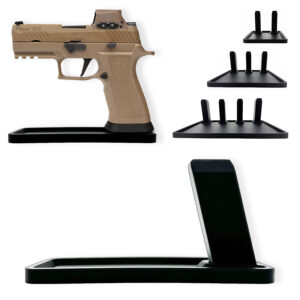
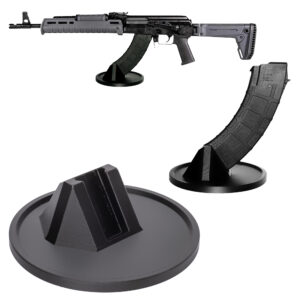

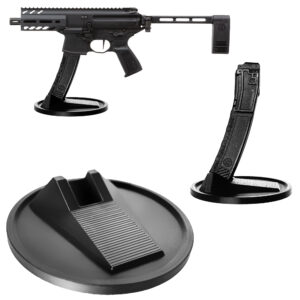
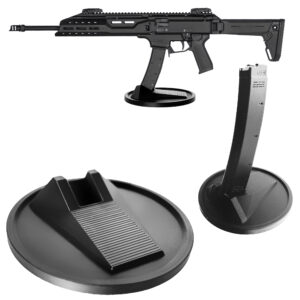


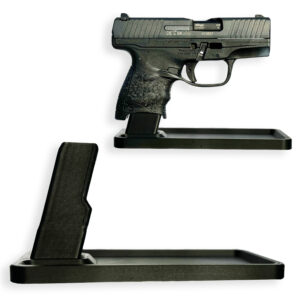
Colt
Colt M4 Carbine
Colt LE6920
Colt AR-15 A4
Daniel Defense
DDM4 V7
DDM4 V9
DDM4 V11
DDM4 ISR (Integrally Suppressed Rifle)
Smith & Wesson (S&W)
M&P15 Sport II
M&P15 Tactical
M&P15T
Bravo Company Manufacturing (BCM)
BCM Recce-16
BCM Recce-14
BCM MCMR Series
Aero Precision
M4E1 Series
AC-15
AR15 Pistol (Various Configurations)
Ruger
Ruger AR-556
Ruger SR-556
Ruger AR-556 MPR (Multi-Purpose Rifle)
Springfield Armory
Saint Victor
Saint Edge
Saint AR-15
PSA (Palmetto State Armory)
PSA PA-15
PSA AR-V
PSA Jakl (AR Pistol)
FN America
FN 15 Tactical Carbine
FN 15 Patrol
FN 15 DMR
Wilson Combat
Recon Tactical
Super Sniper
Protector Carbine
SIG Sauer
SIG M400 Tread
SIG M400 Elite
SIG M400 SDI
LWRC International
IC DI (Direct Impingement)
IC SPR
IC A5
Bushmaster Guns
XM-15 QRC
Bushmaster MOE
XM-15 Patrolman
Rock River Arms
LAR-15 Entry Tactical
LAR-15 Predator
LAR-15 Elite Comp
Stag Arms
Stag 15 Tactical
Stag 15L (Left-Handed Models)
Stag 15 Valkyrie
Noveske Rifleworks
Noveske Gen 4 N4
Noveske Space Invader (AR Pistol)
Noveske Recon
Anderson Manufacturing
AM-15 Optic Ready
AM-15 M4 Carbine
AM-15 Precision Rifle
Adams Arms
AA-15 Piston Rifle
P2 AARS (Adams Arms Rifle Series)
Black Rain Ordnance
SPEC15 Series
BRO Predator
Fallout 15
Diamondback Guns
DB15 Series
DB15CCMLB
DB15EB
Del-Ton Inc.
DTI-15
Del-Ton Echo 316H
Sierra 316M
Windham Weaponry
Windham SRC
Windham VEX-SS
Windham RMCS-4 (Caliber Conversion System)
Christensen Arms
CA-15 G2
CA-15 Recon
CA-15 Titanium Edition
Patriot Ordnance Factory (POF-USA)
Renegade Plus
P415 Edge
Revolution DI
LaRue Tactical
PredatAR
OBR (Optimized Battle Rifle)
LaRue Stealth 2.0
Battle Arms Development
Workhorse Patrol Carbine
BAD556-LW (Lightweight)
Authority Elite Rifle
Faxon Guns
Ascent AR-15
FX-19 (AR Pistol)
Streamline Ultralight Series
KE Arms
KE-15 SLT (Super Lightweight Tactical)
KE-15 Scout Carbine
Primary Weapons Systems (PWS)
MK1 MOD 2-M
MK116 PRO
MK107 (Piston AR Pistol)
ZEV Technologies
ZEV Core Elite Rifle
ZEV AR15 Billet Rifles
Franklin Armory
BFSIII AR-C1
Militia Model
F17-L (Chambered in .17 WSM)
Seekins Precision
SP15 DMR
NX15 Skeletonized Rifle
Havak Bravo
Aero Precision (Additional Models)
EPC-9 (Pistol Caliber ARs)
VG6 AR Rifles
Barrett Guns
REC7 DI
REC7 Gen II
CMMG
MK4 RCE
Resolute 300
Banshee (AR Pistol)
DPMS Panther Arms
Panther Oracle
Panther LR-308
H&K (Heckler & Koch)
HK MR556A1
HK416 (Military Variant)
Rock Island Armory (Armscor)
VR-80 Tactical AR (Shotgun AR Platform)
Troy Industries
Troy SPC-A3
Troy PAR (Pump Action AR)
Wilson Tactical
Tactical Recon AR
Protector Series
F1 Guns
FDR-15 Skeletonized Rifle
BDRx-15 Series
Juggernaut Tactical
JT-15
JT-10 Precision Rifle
AeroSurplus
Surplus AR-15 Rifles (Budget Models)
Thunder Tactical
AR-15 Basic Carbine
Tactical Builder Sets
Radical Guns
RF-15
Forged AR-Series
Dark Storm Industries
DS-15 Featureless Rifles
DS-10 Typhoon
DRD Tactical
Paratus
Aptus AR Rifles
Bear Creek Arsenal
BCA-15
AR Complete Upper Builds
Aero Survival Rifles (ASI)
ASR Tactical Series
Tactical Edge
WARFIGHTER Series
AR-15 Lightweight Rifles
Lone Star Armory
TX15 DMR
TX15 Carbine
HERA Arms
HERA H7
HERA AR-15 Lower Builds
IWI (Israeli Weapon Industries)
Zion-15
DRD Tactical
Tactical Modular Rifles
Quick-Takedown Rifles
V Seven Weapons
1776 Rifle
Hyperlite Rifle
Core Rifle Systems
Core15 Tac III
Core15 Patrol Rifle
Armalite (Original AR-15 Creator)
M15 Tactical
M15 A4 Carbine
DEF15 (Defensive Sporting Rifle Series)
PSA (Palmetto State Armory Additional Models)
PSAK-47 Hybrid (AR-AK Style Hybrid)
PSA Dagger (Pistol Caliber Configurations)
Odin Works
OTR-15
Odin Recon Rifle
Maxim Defense
MDX-508 PDX (Compact AR Pistol)
MDX-510 Rifle